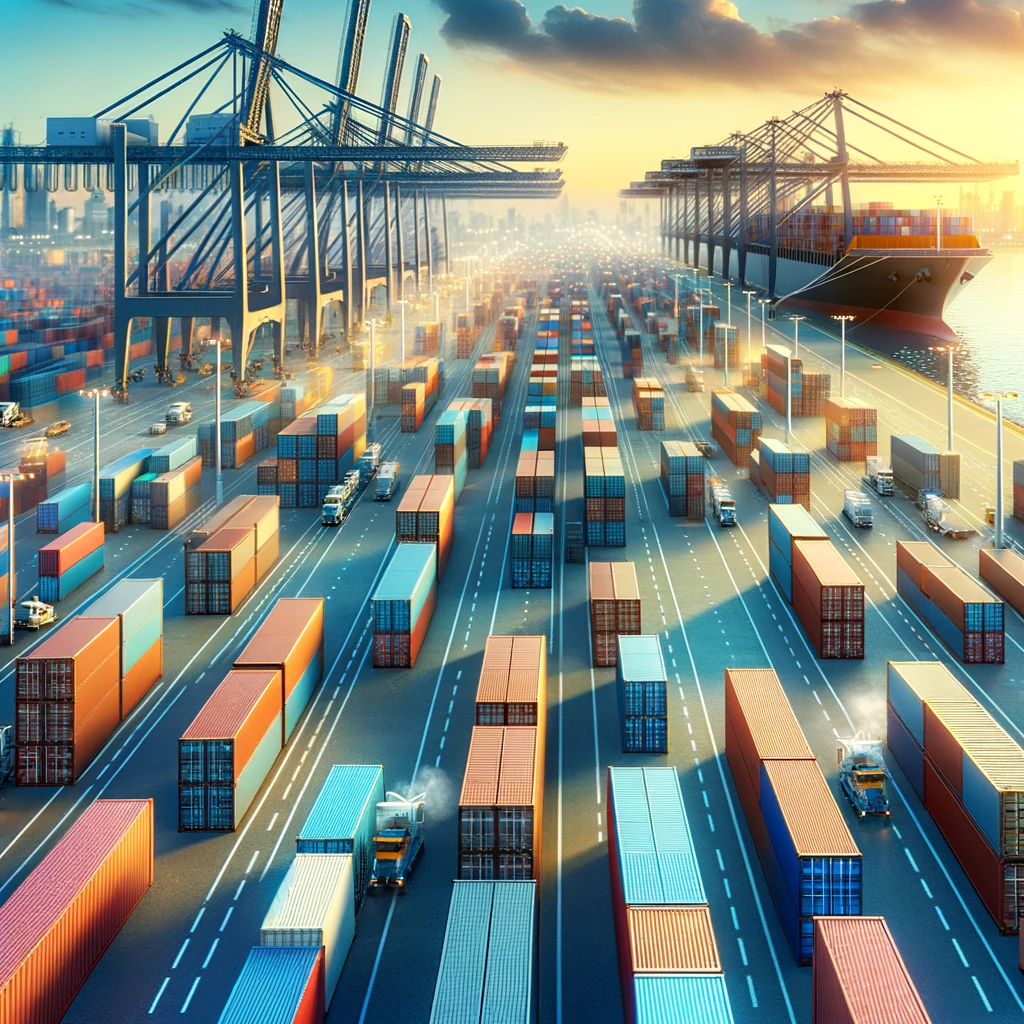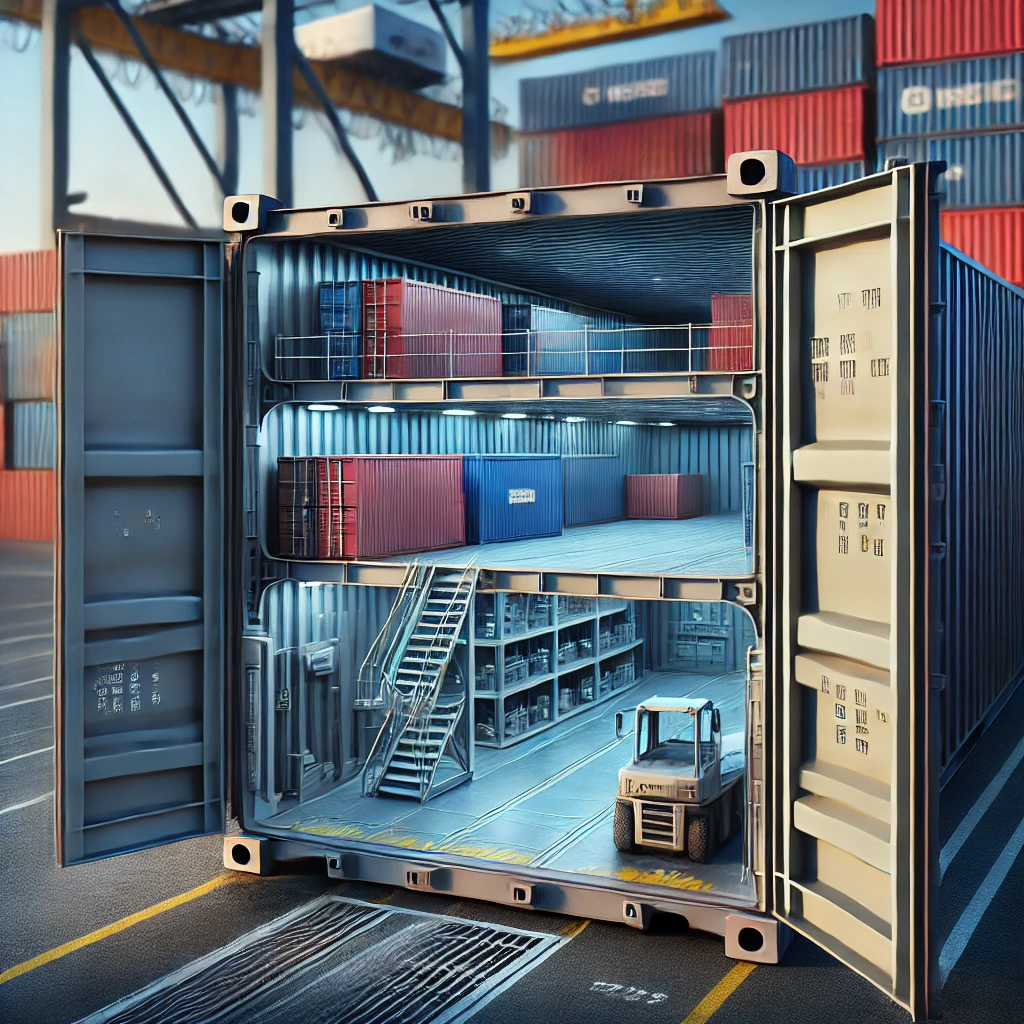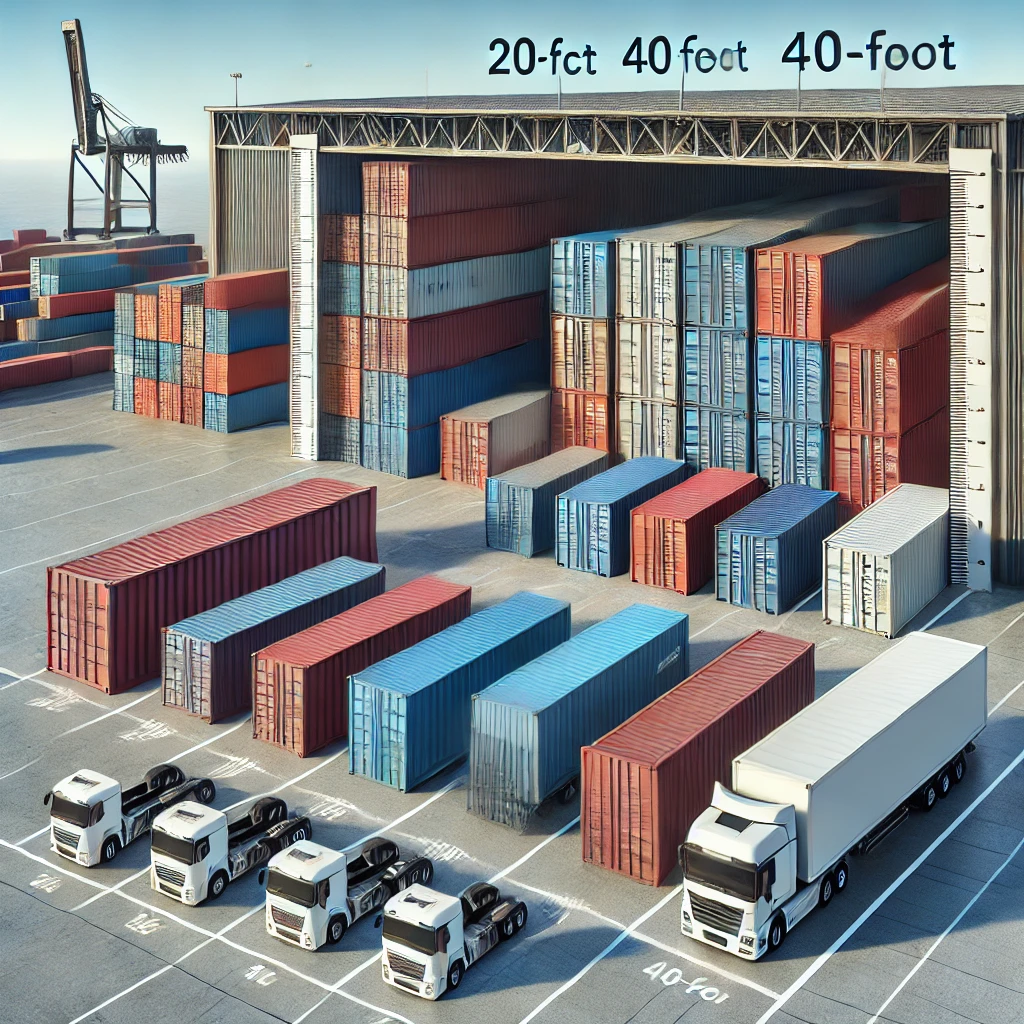Everything You Need to Know About the Size of a Shipping Container
This guide covers standard container dimensions, variations, practical applications, and how to select the right container for your shipping needs.

📏 Standard Shipping Container Sizes
Shipping containers come in multiple sizes, but the most commonly used are 20-foot and 40-foot containers. Below are the standard dimensions:
1️⃣ 20-Foot Standard Container 📦
- External Dimensions: 20’ (L) × 8’ (W) × 8’6” (H)
- Internal Dimensions: 19’4” (L) × 7’8” (W) × 7’10” (H)
- Capacity: 33.2 cubic meters (1,172 cubic feet)
- Maximum Payload: 28,200 kg (62,170 lbs)
👉 Best suited for smaller shipments, heavy goods, and storage solutions.
2️⃣ 40-Foot Standard Container 🚛
- External Dimensions: 40’ (L) × 8’ (W) × 8’6” (H)
- Internal Dimensions: 39’6” (L) × 7’8” (W) × 7’10” (H)
- Capacity: 67.7 cubic meters (2,390 cubic feet)
- Maximum Payload: 28,800 kg (63,493 lbs)
👉 Ideal for larger cargo loads, bulky shipments, and maximizing cost efficiency per unit shipped.
📏 High Cube Containers: More Space, More Efficiency
In addition to standard containers, high cube (HC) containers provide additional height for oversized cargo:
3️⃣ 40-Foot High Cube Container 🏗️
- External Dimensions: 40’ (L) × 8’ (W) × 9’6” (H)
- Internal Dimensions: 39’6” (L) × 7’8” (W) × 8’10” (H)
- Capacity: 76.4 cubic meters (2,700 cubic feet)
- Maximum Payload: 28,600 kg (63,052 lbs)
👉 Best suited for large, voluminous goods like furniture, machinery, and industrial equipment.

📏 Specialized Container Sizes & Uses
For specific types of cargo, specialized containers exist:
4️⃣ 45-Foot High Cube Container 🚢
- Provides additional length for even larger shipments.
- Commonly used for high-volume goods needing extra space.
5️⃣ Refrigerated (Reefer) Containers ❄️
- Used for temperature-sensitive cargo like food, medicine, and chemicals.
- Available in 20-ft, 40-ft, and 45-ft sizes.
6️⃣ Open-Top & Flat Rack Containers 🏗️
- Designed for oversized or heavy machinery that doesn’t fit inside standard containers.
- Open-top containers allow for loading from the top using cranes.
- Flat racks are useful for vehicles, pipes, and large industrial goods.
🏢 Choosing the Right Container Size for Your Business
Selecting the right shipping container depends on:
✅ Cargo Type: Ensure the container fits the dimensions and weight of your shipment.
✅ Cost Efficiency: Consider the shipping cost per cubic meter to maximize profitability.
✅ Storage Needs: If using for warehousing, high cubes provide extra vertical space.
✅ Regulations & Restrictions: Some countries have size limitations on container transport.
✅ Environmental Conditions: Reefers for perishable goods, dry containers for general cargo.

⚠️ Common Challenges in Container Sizing
Despite standardized dimensions, businesses often face:
❌ Space Underutilization: Choosing a container too large can lead to wasted space.
❌ Weight Restrictions: Even if volume allows, road transport regulations limit weight.
❌ High Freight Costs: Larger containers cost more, making optimization crucial.
❌ Availability Issues: Some sizes may not be available at all ports or with all carriers.
Understanding these challenges helps companies make informed logistics decisions.
🚀 Future Trends in Shipping Containers
As global trade evolves, container technology is improving:
📡 Smart Containers – Equipped with IoT tracking for real-time cargo monitoring.
🌱 Eco-Friendly Containers – New designs focus on sustainability and recyclable materials.
🏗️ Modular & Custom Containers – Used in innovative ways for housing, retail, and infrastructure projects.
These innovations are shaping the future of shipping and logistics, making transportation more efficient and cost-effective.

✅ Conclusion
The size of a shipping container plays a vital role in logistics, impacting freight costs, storage efficiency, and cargo safety. Whether using 20-ft, 40-ft, high cube, or specialized containers, businesses must assess their shipping needs carefully to optimize their supply chain.
By understanding container dimensions and choosing the right type, companies can enhance efficiency, reduce costs, and improve global trade operations. 🚢📦🌍
